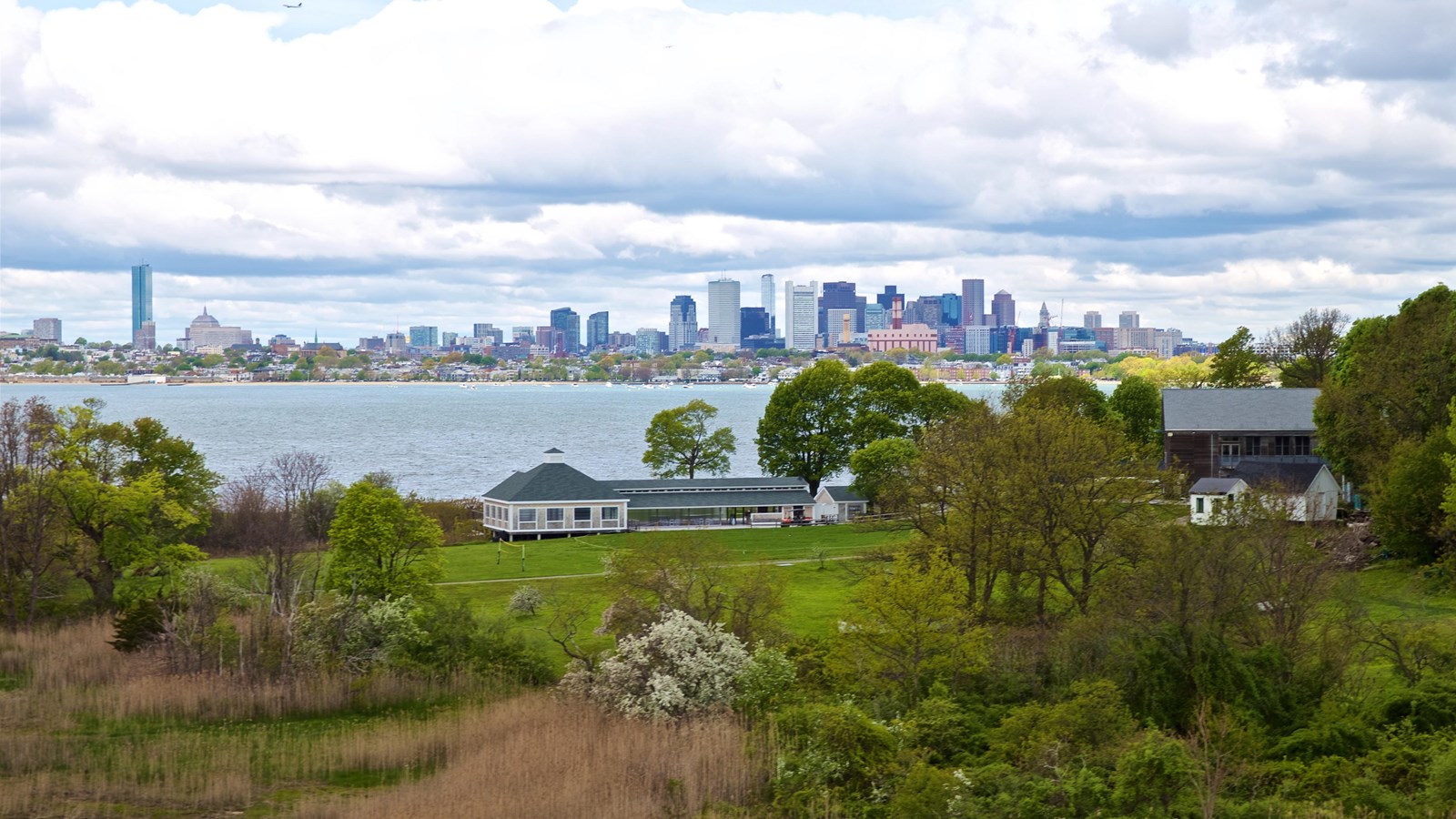Last updated: January 16, 2025
Place
Thompson Island

Boston Harbor Now/Liz Cook
Benches/Seating, Ferry - Passenger, First Aid Kit Available, Picnic Table, Restroom, Scenic View/Photo Spot, Water - Drinking/Potable
Just under 4.5 miles away from Long Wharf sits Thompson Island. It is both the closest island to Boston and one of the biggest islands in the harbor at 169.9 upland acres. Today, the island is home to the Outward-Bound Education Center. The island boasts salt marshes, a wetland, and remnants of fruit orchards.
Prior to European colonization, Indigenous people accessed the island seasonally for thousands of years. Accompanied by Masconomo, the sagamore of Agawam, a white settler named David Thompson searched for a suitable trading post site here in 1619. It is possible that Masconomo shared his knowledge of the natural landscape during this time. David Thompson established his trading post on the island and traded with the Neponset Band of the Massachusett.
Thompson then resettled the island in 1626, after William Trevour had claimed it on his behalf. The island, which had been called "Island of Trevour," became "Thompson Island." Thompson operated the trading post until his death in 1627.1
In the years that followed Thompson's death, settlers drained much of the marshland to improve the pasture area. In 1775, British forces occupied the Island during the Siege of Boston. In May of 1775, colonial forces took control of the island and burned all buildings and crops. For much of the next two hundred years the island served as pastureland.2
In 1833, a group of philanthropists established the Boston Farm School on the island. The school provided a home and education for "at risk boys." The first students lived on the South side of the island in an old farmhouse. The students helped build what they called the "mansion house." Situated at the top of the hill, the "mansion house" had all facilities necessary to operate a school. Two years after the school's establishment, the Boston Asylum for Indignant Boys, merged with the Boston Farm School on the island.
In its early years, the Boston Farm School housed about 70 young boys. The school maintained agricultural and vocational programs for students and kept all sorts of farm animals. In addition, they grew their own food and sold surplus in the summer for funding.3 In 1842, a fishing expedition went wrong. The Brooklyn Daily Eagle, highlights the tragedy of the 23 boys and instructor.4
By the 1930s, the farming program began to fade away. Renamed the Thompson Academy in 1956, the school shifted its focus and became a six-year secondary school program focused on providing a more conventional education. The school significantly reduced the farm and trade aspect of the school. In 1988, the school became the Thompson Island Outward Bound Education Center and continued to serve young people by working in partnership with public schools and providing unmatchable experirences.
In 2024, the organization announced a renaming to Cathleen Stone Island Outward Bound School to recognize Cathleen D. Stone's commitment to environmental activism and education. The organization owns and maintains this island, which is now also known as Cathleen Stone Island.5 There is limited public access to the island in the summer.
Learn More...
Footnotes
- Olmsted Center for Landscape Preservation (OCLP), Cultural Landscape Report: Boston Harbor Islands National & State Park, Volume 2: Existing Conditions (Boston: National Park Service, 2017), 254- 256; Olmsted Center for Landscape Preservation, Cultural Landscape Report: Boston Harbor Islands National & State Park, Volume 1: Historical Overview (Boston: National Park Service, 2017), 53.
- OCLP, Cultural Landscape Report, Volume 1: Historical Overview, 14, 86-87; OCLP, Cultural Landscape Report Volume 2: Existing Conditions, 254-256.
- "Our History," Cathleen Stone Island Outward Bound School, accessed January 2025; OCLP, Cultural Landscape Report Volume 1: Historical Overview, 14; OCLP, Cultural Landscape Report: Boston Harbor Islands National & State Park, Volume 2: Existing Conditions, 30.
- "Terrible Disaster at Boston," The Brooklyn Daily Eagle, May 2, 1842, accessed March 28, 2023.
- "Our History," Cathleen Stone Island Outward Bound School, accessed January 2025.
